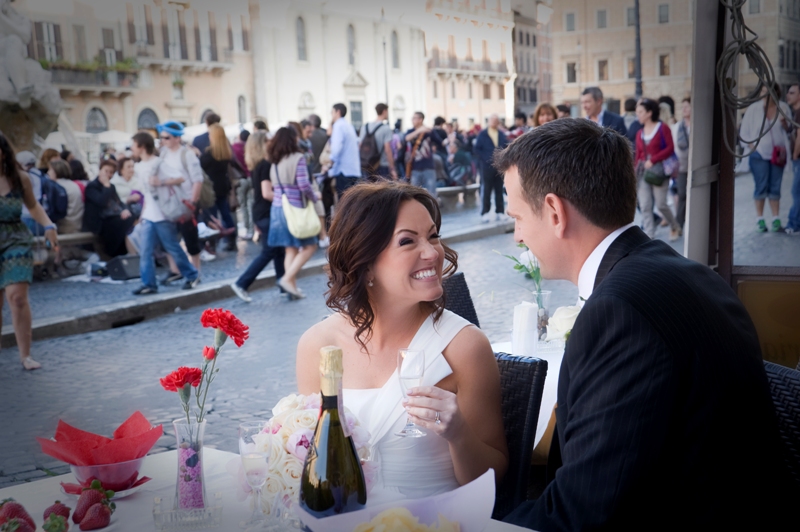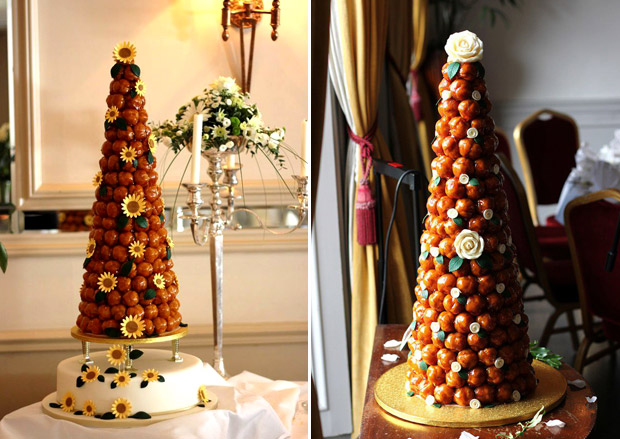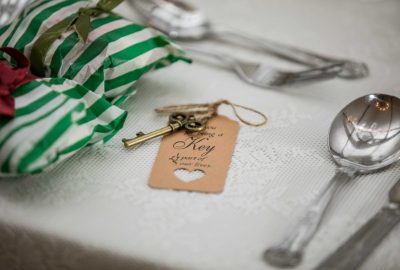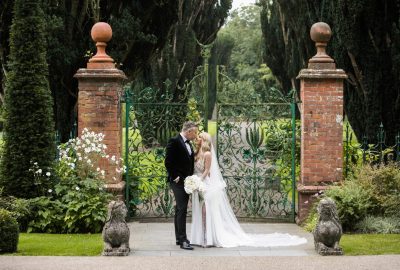Image by Joshua Komanapalli
In Germany, broken dishes bring luck to the soon-to-be-newlyweds. On the eve of the wedding, an informal party called Polterabend is held, where the guests bring crockery and porcelain to smash in front of the couple, to grant them a lucky life. Then, the bride and groom have to clean it all up. The German brides don’t usually have a full bridal party of bridesmaids, groomsmen and flowergirls or pageboys – there are two witnesses instead. A bride’s bouquet is tied with a length of white ribbon, tied after the ceremony around the antenna of the car taking them to the reception. At the reception, a custom of ‘veil dance’ is often observed, where the guests pay the bride or groom if they want to dance with them.
In Poland, the bride and groom walk up the aisle together at the religious ceremony, once all the guests and parents are all seated inside the church. Sometimes, the priest meets them at the bottom of the aisle and walks up with them, leading the way. Afterwards, at the entrance to the reception, the newlyweds are welcomed by both mothers with bread and salt on a plate – this is an old Polish traditional greeting, with bread symbolising a plentiful future, and salt to “preserve” their marriage.
Polish wedding ceremony by obiektiv.pl
In Greece, it’s okay to spit on the bride as she’s walking up the aisle – it’s a sign of good luck and good wishes! During a Greek Orthodox church ceremony, the couple will walk together around the altar three times, led by the priest. The walk is a nod to the Holy Trinity, and symbolises the journey the couple are now beginning as husband and wife.
In India, wedding traditions are very precise and meaningful, starting well before the wedding. The ceremony is conducted before a sacred fire, which the couple circle four times. Afterwards, they exchange seven vows, while taking seven steps, and a symbolic matrimonial knot is then tied around them. The ceremony ends with the priest and the elders giving their blessings to the couple.
Image by Joshua Komanapalli
In China, once an engagement is announced, the families of the bride and groom will consult a fortune teller who will choose an auspicious date for the wedding so the couple can marry on a lucky day. During the ceremony, the couple will either kneel or bow three times – to the heaven and earth, to the ancestors and the parents, and to each other. Tea is then served by the bride to the parents and relatives, in order of seniority. Nowadays, many Chinese brides wear white Western-style wedding gowns. Later, at the reception, the bride will change out of her white gown into a traditional cheongsam.
In Italy, it is thought to be bad luck for a bride to wear any gold jewellery except her wedding ring. Some say that even gold colour is ruled out. In some regions, the groom traditionally waits for the bride at the door of the church, holding her bouquet. A civil ceremony may be conducted in any place that is approved by the authorities – this often includes most picturesque places like villas, palaces, or historical town halls – a location dream come true! And of course, after the couple become Mr and Mrs, there is the banquet to end all banquets.
A Rome wedding by Infinity Weddings
In Thailand, wedding traditions vary greatly by region, and are influenced by local traditions and religion. Buddist weddings are most common, and they usually take place at a private home instead of a temple or similar. The night before the wedding, a Buddhist ceremony of honouring the bride’s ancestors may take place. The wedding day itself will start with a prelude blessing by the monks, this will be attended only by the closest family and friends of the bride and groom. At the ceremony itself, a specially prepared white thread is looped around the bride and groom’s heads to symbolise their union, and later flower garlands are placed on their heads while the elder conducting the ceremony anoints their foreheads with oil, followed by the guests pouring holy water over their hands out of a conch shell. Pieces of white string are tied around the bride and groom’s wrists to wish them good luck – they’re meant to be kept on for at least three days to get all the possible luck.
In France, a lot of honking is done by the procession of cars behind the bride and groom’s car on its way to the reception. An evening reception is preceded by a mini-reception called ‘le vin d’honneur’ which immediately follows a wedding ceremony. This may take place at the reception venue itself, or at a specially chosen place. ‘Le vin’ can last a few hours, and gives the couple a nice breather in between the ceremony and the main reception. French wedding guests may receive an invitation to attend this, but not the main reception. The French treat the wedding cake like a work of art, and it’s no wonder as their cakes are the towering ‘croquembouche’ – a cone-shaped cake made of cream-filled macarons, held together by lots of caramel strings.
Image by French Wedding Cakes







